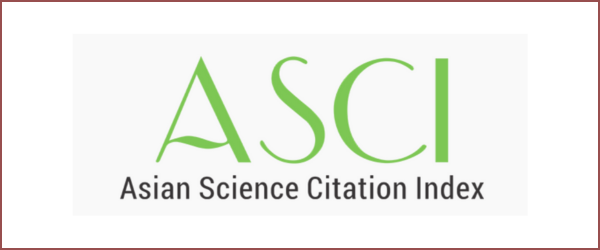Indonesian Islamic Banks and Financial Stability: An Empirical Analysis
DOI:
https://doi.org/10.14421/EkBis.2021.5.1.1279Keywords:
Keywords, Autoregressive Distributed Lag (ARDL), Islamic Banking, Financial Stability, Z Score.Abstract
Islamic banking in Indonesia is very vulnerable to volatility in their business processes due to its small market share. Compared to conventional banks, seen from their financial performance, Islamic banks have a worse performance because of lower profit (ROA). This study examines the stability of Islamic banking in Indonesia. Stability is measured using the Z Score. The data in this study are aggregate data for Islamic commercial banks. The data used are monthly data from January 2015 to December 2019. This study uses the ARDL (Autoregressive Distributed Lag) method. The results of this study are that all independent variables OER, NPF, inflation, IPI, exchange rates have an effect on the stability of Islamic banking, except FDR. Lower efficiency and problematic financing increases the stability of Islamic banking. Meanwhile, macroeconomic factors, inflation and exchange rates, have a negative effect on the stability of Islamic banking. The economic downturn due to inflation and rupiah depreciation will increase the instability of Islamic banks.
Downloads
 Abstract viewed: 832 times
|
Abstract viewed: 832 times
|
 PDF downloaded = 649 times
PDF downloaded = 649 times
References
Alqahtani, F., & Mayes, D. G. (2018a). Financial stability of Islamic banking and the global financial crisis: Evidence from the Gulf Cooperation Council. Economic Systems, 42(2), 346–360. https://doi.org/10.1016/j.ecosys.2017.09.001
Alqahtani, F., & Mayes, D. G. (2018b). Financial stability of Islamic banking and the global financial crisis: Evidence from the Gulf Cooperation Council. Economic Systems, 42(2), 346–360. https://doi.org/10.1016/j.ecosys.2017.09.001
Basurto, M. S., & Goodhart, C. (2009). Banking stability measures. IMF Working Papers, 1–54.
Beck, T., Demirgüç-Kunt, A., & Merrouche, O. (2013). Islamic vs. conventional banking: Business model, efficiency and stability. Journal of Banking and Finance, 37(2), 433–447. https://doi.org/10.1016/j.jbankfin.2012.09.016
Beck, T., Demirgüç-Kunt, A., Merrouche, O., Berger, A. N., Boubakri, N., Guedhami, O., Li, X., Bitar, M., Pukthuanthong, K., Walker, T., Caporale, G. M., Çatık, A. N., Helmi, M. H., Menla Ali, F., Tajik, M., Chaffai, M., Čihák, M., Hesse, H., Parashar, S. P., … Abedifar, P. (2019). How did Islamic banks do during global financial crisis? Global Finance Journal, 38(2), 100487. https://doi.org/10.1016/j.gfj.2019.100478
Berger, A. N., Boubakri, N., Guedhami, O., & Li, X. (2019). Liquidity creation performance and financial stability consequences of Islamic banking: Evidence from a multinational study. Journal of Financial Stability, 44, 100692. https://doi.org/10.1016/j.jfs.2019.100692
Caporale, G. M., Çatık, A. N., Helmi, M. H., Menla Ali, F., & Tajik, M. (2019). The bank lending channel in the Malaysian Islamic and conventional banking system. Global Finance Journal, July 2018, 100478. https://doi.org/10.1016/j.gfj.2019.100478
Chaffai, M. (2019). Hyperbolic distance function, technical efficiency and stability to shocks: A comparison between Islamic banks and conventional banks in MENA region. Global Finance Journal, June 2018, 100485. https://doi.org/10.1016/j.gfj.2019.100485
Dendawijaya, L. (2009). Manajemen Perbankan Edisi Revisi. In Ghalia Indonesia. Ghalia Indonesia.
Dienillah, A. A., & Anggraeni, L. (2016). Dampak Inklusi Keuangan Terhadap Stabilitas Sistem Keuangan Di Asia. Buletin Ekonomi Moneter Dan Perbankan, 18(4), 409–430. https://doi.org/10.21098/bemp.v18i4.574
Ghenimi, A., Chaibi, H., & Omri, M. A. B. (2017). The effects of liquidity risk and credit risk on bank stability: Evidence from the MENA region. Borsa Istanbul Review, 17(4), 238–248. https://doi.org/10.1016/j.bir.2017.05.002
Gujarati, D. N. (2004). Basic Econometrics. In New York. McGraw-Hill. https://doi.org/10.1126/science.1186874
Hardanto, S. S. (2006). Manajemen Risiko bagi Bank Umum kisi kisi ujian sertifikasi manajemen risiko Perbankan Tingkat I. PT Elex Media Komputindo.
Hassan, M. K., Khan, A., & Paltrinieri, A. (2019). Liquidity risk, credit risk and stability in Islamic and conventional banks. Research in International Business and Finance, 48, 17–31. https://doi.org/10.1016/j.ribaf.2018.10.006
Hussein, K. (2010). Bank-level stability factors and consumer confidence-A comparative study of Islamic and conventional banks product mix. Journal of Financial Services Marketing, 15(3), 259–270. https://doi.org/10.1057/fsm.2010.21
Kabir, M. N., Worthington, A., & Gupta, R. (2015). Comparative credit risk in Islamic and conventional bank. Pacific Basin Finance Journal, 34, 327–353. https://doi.org/10.1016/j.pacfin.2015.06.001
Lassoued, M. (2018). Comparative study on credit risk in Islamic banking institutions: The case of Malaysia. Quarterly Review of Economics and Finance, 70, 267–278. https://doi.org/10.1016/j.qref.2018.05.009
Miah, M. D., & Uddin, H. (2017). Efficiency and stability: A comparative study between islamic and conventional banks in GCC countries. Future Business Journal, 3(2), 172–185. https://doi.org/10.1016/j.fbj.2017.11.001
Mutamimah, & Chasanah, siti nur zaidah. (2012). Analisis eksternal dan internal dalam menentukan. Jurnal Bisnis Dan Ekonomi (JBE), 19(1), 49–64. https://media.neliti.com/media/publications/24170-ID-analisis-eksternal-dan-internal-dalam-menentukan-non-performing-financing-bank-u.pdf
Nandadipa, S. (2010). Analisis Pengaruh Pengaruh CAR, NPL, Inflasi, Pertumbuhan DPK, Dan Exchange Rate Terhadap LDR (Studi Kasus Pada Bank Umum Di Indonesia Periode 2004 - 2008). Universitas Diponegoro.
Nugroho, L., Kuncoro, F. W., & Mastur, A. A. (2019). Analis Perbandingan Bank Umum Syariah Dengan Unit Usaha Syariah Dari Aspek Efisiensi; Kualitas Asset Dan Stabilitas Keuangan (Periode Tahun 2014-2017). IQTISHADIA: Jurnal Ekonomi & Perbankan Syariah, 6(2), 100. https://doi.org/10.19105/iqtishadia.v6i2.2354
Paltrinieri, A., Dreassi, A., Rossi, S., & Khan, A. (2020). Risk-adjusted profitability and stability of Islamic and conventional banks: Does revenue diversification matter? Global Finance Journal, 100517. https://doi.org/10.1016/j.gfj.2020.100517
Restiani, D. (2014). Mengenal Stabilitas Sistem Keuangan dan Berperan Serta di Dalamnya. Kompasiana.
Salami, O. L., & Adeyemi, A. A. (2015). Malaysian islamic banks’ efficiency: An intra-bank comparative analysis of islamic windows and full-fledged subsidiaries. International Journal of Business and Society, 16(1), 19–38. https://doi.org/10.33736/ijbs.551.2015
Soekapdjo, S., Tribudhi, D. A., & Nugroho, L. (2019). Pengaruh Fundamental Ekonomi dan Kinerja Keuangan Terhadap Kredit Bermasalah Pada Bank Syariah Di Indonesia. Ekonika : Jurnal Ekonomi Universitas Kadiri, 4(2), 126. https://doi.org/10.30737/ekonika.v4i2.327
Tanjung, H & Devi, A. (2013). Metodologi Penelitian Ekonomi Islam. Gramata Publishing.
Thomas, R. . (1997). Modem Econometrics: An Introduction. Addision-Wisley Longman.
Widarjono, A. (2018). EKONOMETRIKA Pengantar dan Aplikasinya Disertai Panduan Eviews (5th ed.). UPP STIM YKPN.
Widarjono, A. (2020). Stability of Islamic banks in Indonesia: Autoregressive Distributed Lag Approach. Jurnal Keuangan Dan Perbankan, 24(1), 40–52. https://doi.org/10.26905/jkdp.v24i1.3932




























 This work is licensed under a
This work is licensed under a 